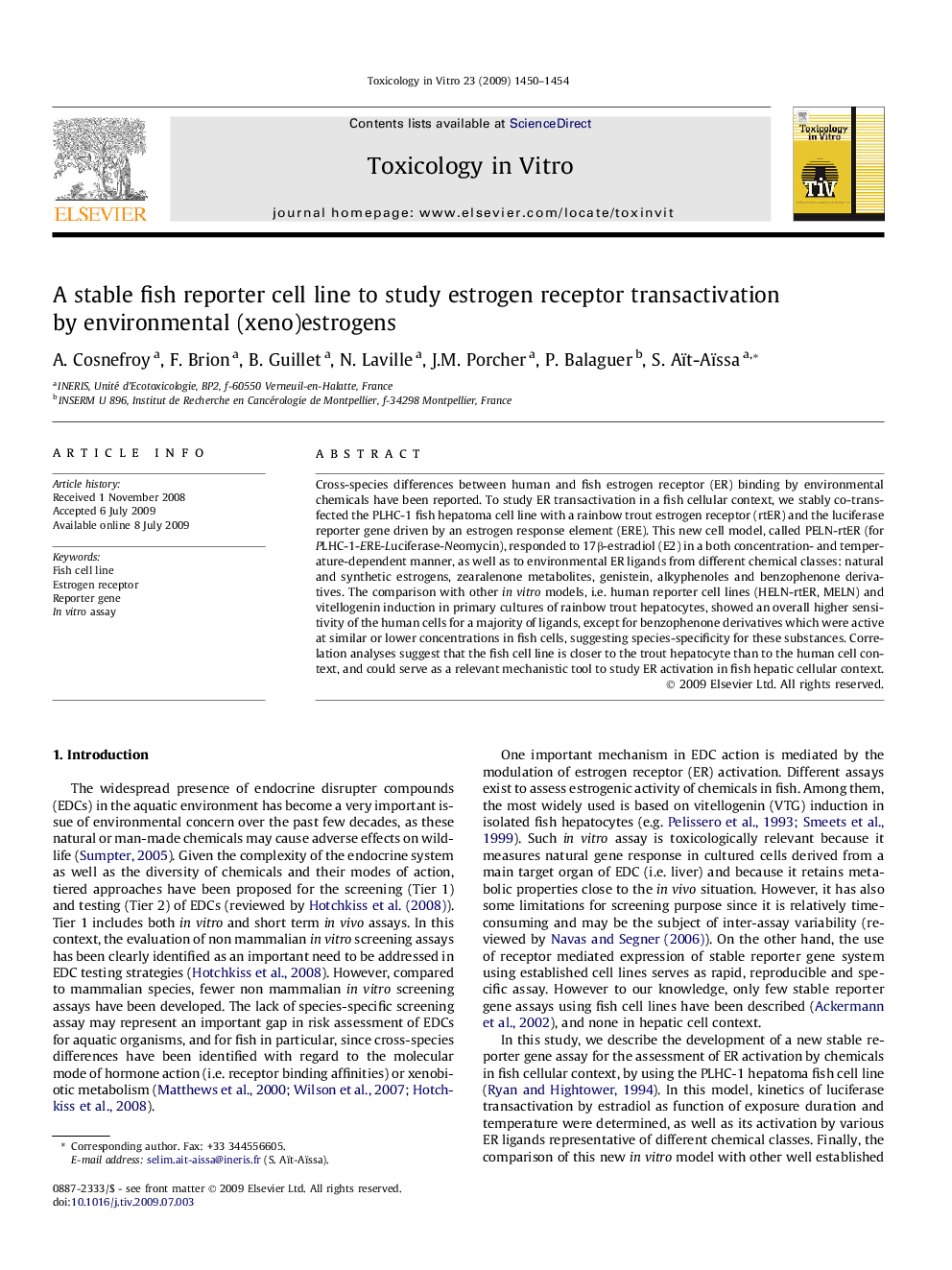| Article ID | Journal | Published Year | Pages | File Type |
|---|---|---|---|---|
| 2602632 | Toxicology in Vitro | 2009 | 5 Pages |
Cross-species differences between human and fish estrogen receptor (ER) binding by environmental chemicals have been reported. To study ER transactivation in a fish cellular context, we stably co-transfected the PLHC-1 fish hepatoma cell line with a rainbow trout estrogen receptor (rtER) and the luciferase reporter gene driven by an estrogen response element (ERE). This new cell model, called PELN-rtER (for PLHC-1-ERE-Luciferase-Neomycin), responded to 17β-estradiol (E2) in a both concentration- and temperature-dependent manner, as well as to environmental ER ligands from different chemical classes: natural and synthetic estrogens, zearalenone metabolites, genistein, alkyphenoles and benzophenone derivatives. The comparison with other in vitro models, i.e. human reporter cell lines (HELN-rtER, MELN) and vitellogenin induction in primary cultures of rainbow trout hepatocytes, showed an overall higher sensitivity of the human cells for a majority of ligands, except for benzophenone derivatives which were active at similar or lower concentrations in fish cells, suggesting species-specificity for these substances. Correlation analyses suggest that the fish cell line is closer to the trout hepatocyte than to the human cell context, and could serve as a relevant mechanistic tool to study ER activation in fish hepatic cellular context.
